Plan a 9-day circuit through Moscow, the Golden Ring towns, and St. Petersburg to cover the top sight and experiences. Which route fits your pace: a compact Moscow-first loop, a Golden Ring segment, and a couple of days in St. Petersburg? Domestic flights connect Moscow and St. Petersburg in about 1 hour 15 minutes, or you can choose the Sapsan high-speed train for ~2.5 hours of smooth ride.
In Moscow, start with the Red Square, the Kremlin, and St. Basil’s for architectural impact and museums in a single day. Take a hydro boat on the Moscow River for a real perspective of the city’s sight along the waterfront. For evening stays, choose a hotels option in the Tverskoy district or near the Arbat with traditional restaurants.
The Golden Ring offers architectural riches and traditional crafts. You’ll find rows of wooden houses, churches, and kremlins in Suzdal, Rostov, Yaroslavl, and Vladimir. Explore craft markets where Matryoshka nesting dolls come with unique store name signs. The best time to visit is during summer festivals, when locals bring the streets to life.
In St. Petersburg, the Hermitage and the Church of the Savior on Spilled Blood anchor your itinerary, with optional spiritual moments at the Kazan Cathedral. A sunset cruise on the Neva provides a real sense of the city’s architectural lines. For nights, pick a central hotels option near Palace Square to cut transit time; a full itinerary can include Peterhof fountains, the Mariinsky Theatre, and canal rides on a hydro boat.
To stay connected, buy a local SIM for better communication and offline maps. Look for stores with an authentic name on the sign and ask locals for store recommendations beyond tourist zones. Typical hotels in Moscow and St. Petersburg run from $90 to $180 per night for mid-range rooms; Golden Ring inns are usually $60–$120. Prices rise in July and August, so during peak season plan ahead to secure a comfortable stay near transit hubs.
Make your plan with this guide and you’ll experience russian hospitality, art, and history in a compact route that blends sight, culture, and modern life into one accessible experience.
Practical Route Planner for Moscow, The Golden Ring & St. Petersburg
Start with three nights in Moscow and use daily trains to link Sergiyev Posad, Pereslavl-Zalesky, Rostov Veliky, Yaroslavl, Suzdal and Vladimir, then continue to St. Petersburg by Sapsan or an overnight option. This sequence keeps travel efficient and maximizes time for attractions.
Distances between legs stay manageable: Moscow to Sergiyev Posad about 1 hour by regional train; Sergiyev Posad to Rostov Veliky roughly 2 hours; Rostov Veliky to Yaroslavl around 1.5 hours; Yaroslavl to Suzdal via local transport 2–3 hours; Suzdal to Vladimir about 1 hour. Allocate 5–6 days for the Golden Ring if you prefer a relaxed pace, or compress into 4 days for a tighter loop with longer days in each town.
The Trinity Lavra of St. Sergius in Sergiyev Posad is unesco-listed and anchors the spiritual contrast of the ring, while Suzdal offers wooden churches, decorative monasteries and peaceful parkland along the river. In Yaroslavl, brisk walk along the Volga embankment complements central monasteries and provincial market squares, and Vladimir presents the Golden Gate and Assumption Cathedral as central landmarks.
Choose accommodation in central districts with easy public transport access to rail stations and bus stops. A mix of boutique hotels and comfortable guesthouses keeps you close to main attractions while offering quiet evenings after busy days of sightseeing. If you travel with friends, opt for a larger apartment or a small luxury hotel with a public lounge for evenings.
October brings crisp air and vivid autumn colors; plan outdoor views during mid-morning and reserve indoor visits for afternoons. Holidays in small towns can bring local markets and small concert events, sometimes featuring violins or traditional performances in decorative churches or town halls. Pack a versatile wardrobe for day trips and a light jacket for evenings.
From Moscow, take a fast train to St. Petersburg for a two-city finish. The Sapsan trip takes about 3.5–4 hours, giving you an afternoon on arrival to stroll along Nevsky Prospect and enjoy a late lunch with friends in a central café. In St. Petersburg, focus on the Hermitage, Church of the Savior on Spilled Blood, Peter and Paul Fortress and the city’s parkland-filled embankments, then consider a guided evening canal tour to see the lights over the city’s historic center.
For a flexible plan, add a luxury extension in Moscow or St. Petersburg as an upgrade option, or weave in a private driver for the Golden Ring days to reduce transport time. If you prefer a lighter pace, drop one stop in the ring and keep a stronger focus on the UNESCO-listed sites and central churches, with a single day in a provincial town and an easy return to the capital.
7-Day Itinerary Template Across Moscow, the Golden Ring, and St. Petersburg
first, book a central Moscow hotel for the first two nights to maximize time and minimize transit.
Day 1–2: Moscow – highlights and rhythm Start at Red Square and the unesco-listed Kremlin, then explore the Armory and cathedral precincts while you soak in real Moscow energy. Reserve several hours for the Tretyakov Gallery or the Pushkin Museum, and add an artist studio visit on the Arbat for a local perspective. Choose a luxury property with elevator access and a calm lounge; keep spare batteries ready for photo stops; consider an optional private guide and a package that covers major sights and a short river cruise. Stay overnight in a central base to keep the pace steady.
Day 3–4: Golden Ring – provincial charms Leave early toward Sergiev Posad for the monastery complex with a rapid ride, then continue to Suzdal, a provincial town with wooden houses along rivers and a small, tranquil vibe. In Vladimir, visit significant churches and kremlin remnants; overnight in a guesthouse with marble bathroom touches or in a traditional inn. When possible, add an optional private guide and a package that includes countryside lunch and a hands-on craft session; for a different pace, a berth on a river segment can be arranged in season. Throughout, carry a light power bank to keep devices ready.
Day 5: Moscow to St. Petersburg – rapid ride Take the rapid Sapsan to St. Petersburg; the trip lasts about four hours. If you want to settle in quietly, choose an overnight berth and arrive rested. In St. Petersburg, check in to a central accommodation with marble lobbies and an elevator for easy access, then enjoy a canal-side dinner or a stroll along the Neva to set the mood for the city.
Day 6–7: St. Petersburg – icons of art and water Start at the Hermitage–one of the world’s great repositories of art–and then visit the Church of the Savior on Spilled Blood and the Peter and Paul Fortress. Take a canal ride through the city to see hours of palaces and bridges, especially near the Marble Palace area. Book an optional guided program that covers the Hermitage highlights and a Peterhof visit; choose a better accommodation along the Neva with a quiet lounge and good access. If you have a chance to catch a festival or concert, align your schedule to enjoy it; throughout the days, resting between sights keeps energy high and leaves room for spontaneous local discoveries, including small galleries and artist studios. Depart with a majestic sense that lingers still after you leave the city.
Rail and Road Connections: Best Routes, Tickets, and Travel Times
Book the Moscow–St. Petersburg Sapsan for a fast 4h 15m leg, and lock fares on the site to secure the best price. This core leg anchors Russia’s rail system and keeps your pace efficient while you map a 12-day loop through the Golden Ring and the Volga region.
For a 12-day itinerary that links Moscow, the major provincial towns, and petersburg, mix rail hops with short road transfers. Start in Moscow, then reach Vladimir, Suzdal, Rostov Veliky, Yaroslavl, Kostroma, and Ivanovo by a practical blend of trains and private drives. These segments balance rapid transit with time to explore colourful town centres and parkland along the Volga coast.
Route times give a practical frame: Moscow–Vladimir rail about 1h 40m; Vladimir–Suzdal by road 40–60 minutes; Suzdal–Rostov Veliky by road 2–3 hours; Rostov Veliky–Yaroslavl by road 3–4 hours; Yaroslavl–Kostroma by road 2–3 hours; Kostroma–Ivanovo by road 1–2 hours; Ivanovo back to Moscow by rail 3.5–4.5 hours. These segments let you pace sightseeing without feeling rushed, and they keep you on a steady rhythm across the central Russia landscape.
Tickets and planning: use the official rail site to compare Express and regional trains, pick seats, and secure e-tickets well in advance, especially for peak months. Expect economy fares to range with season and class; comfort and sleeper options suit longer legs of the journey. For the Golden Ring legs, regional trains and short-haul options often have flexible schedules and cheaper fares, which helps when you adjust a 12-day plan on the fly.
Practical tips: carry extra batteries for devices and a portable charger; many stops offer scenic viewpoints and parkland along the Volga where you’ll want to pause for photos. If you arrive in Moscow looking to mix art and science, consider a quick stop at the Cosmonaut museum and nearby exhibitions; these attractions pair nicely with a later arrival in petersburg for a waterfront finish soon after.
Sample 12-day itinerary (rail and road mix):
Day 1–2: Arrive in Moscow, explore the Kremlin, Red Square, and a riverside walk. Day 3: Rail to Vladimir (1h 40m), visit the Cathedral of St. Dmitry and the granite facade of the town centre; overnight in Vladimir. Day 4: Day trip by road to Suzdal; stroll the colourful wooden architecture, parkland by the river, and open-air museums. Day 5: Drive to Rostov Veliky; explore the historic kremlin walls and lakeside views. Day 6: Road to Yaroslavl; wander the old city, enjoy the riverfront, and taste local markets. Day 7: Kostroma via road; visit its nineteenth-century estates and interred artifacts in local museums, then stroll the riverbank. Day 8: Travel to Ivanovo by road for lacquer art and textile heritage, returning to Moscow by late evening. Day 9: Rail from Moscow to St. Petersburg (4h 15m); drop bags at your city hotel. Day 10–11: petersburg–the Hermitage, the Neva embankments, and a canal ride; enjoy a final dinner along the colourful city coast. Day 12: Departure from Moscow or St. Petersburg depending on your flight schedule.
Where to Stay: Neighborhoods by City and Budget
Choose Arbat in central Moscow for a walkable base with river access, a 19th century charm along the Moskva river, and easy transit to luzhniki for events. Having a midrange or budget room here keeps you within reach of the riverfront, the nineteenth facades, and the local life along birch-lined avenues.
In St. Petersburg, Nevsky Prospekt and the Petrogradsky district put you near the Neva river, with easy access to unesco-listed heritage, mosaics in churches, and exhibits that capture centuries of life. What you gain here is a compact core with light-filled mornings, violins from nearby halls, and nerL local energy that makes arrivals feel welcoming.
Across the Golden Ring, Suzdal and Vladimir pair quiet lanes with unesco-listed heritage. Stay in a family-run inn or a small guesthouse near a river site to hear the peal of bells and watch wooden carvings brighten the lobby. The nineteen century façades and slow pace let you absorb the region’s culture without rushing from site to site, while trading stories with hosts adds a personal touch.
Below is a practical grid by city and budget to help you plan overnight stays, delivery times for arrival, and which neighborhoods fit your pace.
| City | Neighborhood | Budget | أبرز الملامح | Overnight options |
|---|---|---|---|---|
| Moscow | Arbat / Khamovniki | Budget: 40–70 EUR; Midrange: 70–130 EUR; Luxury: 180–260 EUR | River views along the Moskva, 19th century charm, birch-lined streets, easy access to luzhniki | Hostels, guesthouses, boutique hotels; 1–3 night stays |
| Moscow | Tverskoy (central) | Budget: 40–75 EUR; Midrange: 80–140 EUR; Luxury: 200+ EUR | Walk to Red Square, light-filled rooms, historic courtyards, convenient transit | Budget hotels, midrange inns, small boutiques; 1–4 night stays |
| St. Petersburg | Nevsky Prospekt / Admiralteysky | Budget: 45–75 EUR; Midrange: 90–150 EUR; Luxury: 210+ EUR | Neva river access, unesco-listed heritage, exhibits in palaces, violins in nearby halls | Bed-and-breakfasts, midrange hotels, compact apartments; 2–5 night stays |
| St. Petersburg | Petrogradsky / Vasileostrovskiy | Budget: 40–70 EUR; Midrange: 80–130 EUR; Luxury: 180–260 EUR | Waterfront walks, light-filled rooms, large parks, easy ferry or tram routes | Apartments, boutique hotels, family-run guesthouses; 2–4 night stays |
| The Golden Ring | Suzdal center | Budget: 30–60 EUR; Midrange: 60–110 EUR; Luxury: 140–200 EUR | unesco-listed heritage, mosaics in churches, wooden architecture, quiet riverside life | Guesthouses, small hotels, overnight homestays; 2–3 night stays |
| The Golden Ring | Yaroslavl / Vladimir | Budget: 40–70 EUR; Midrange: 70–120 EUR; Luxury: 150–250 EUR | Nineteenth-century churches, birch-lined streets, heritage sites well preserved | Inns, family-run hotels, purpose-built guesthouses; 2–4 night stays |
Must-See Sights and Time-Saving Routes in Each City
Start your Moscow day at Red Square and the central Kremlin complex, then follow these time-saving routes to cover the city’s significant sights in a compact period. In october the light softens the domes and crowds thin, helping you live the experience without delays.
- Moscow
- Red Square and the central Kremlin complex: Spasskaya Tower, the Armoury with its arms and ceremonial regalia, and Cathedral Square alongside several palaces within the walls.
- Saint Basil’s Cathedral and the GUM arcade: bright domes, cobblestones, and quick coffee stops along the way.
- Kremlin Armoury Museum and nearby palaces: allocate about 60–75 minutes to see the ancient arms collection, ceremonial carriages, and sacred icons.
- Evening option: a live performance at the Bolshoi or a 40-minute river cruise to see illuminated city bridges and squares.
- The Golden Ring
- Starting point and route concept: these samples cover a clockwise ring from Vladimir to Suzdal, Yaroslavl, and Rostov Veliky, using rapid rail links where available to save time.
- Vladimir: Dormition Cathedral, Golden Gate, and city walls; plan 1.5–2 hours and then move on to Suzdal.
- Suzdal: Spaso-Evfimiyev Monastery and Suzdal Kremlin; wooden houses and quiet monasteries keep the pace steady for a half-day visit.
- Yaroslavl: Church of Elijah the Prophet, the 17th‑century Governor’s House, and Market Square; allow 2 hours for a comfortable stroll and lunch.
- Rostov Veliky: Rostov Kremlin and the Assumption Cathedral; finish with a short walk along the shore before returning toward Moscow; this segment fits a full day as a compact loop.
- Tip: these routes work best when you pair early departures with late-afternoon train options, keeping the ring compact and the sights reachable on foot in town centers.
- St. Petersburg
- The Hermitage and Palace Square: several wings of galleries sit inside the Winter Palace, with the Jordan Staircase and the main square forming the city’s dramatic opening act.
- Church of the Savior on Spilled Blood and Nevsky Prospekt: visit the church for its intricate mosaics, then stroll toward the riverfront and nearby squares for a quick lunch model.
- Peter and Paul Fortress: the city’s historical heart on the Neva; combine with a walk to the nearby Cruiser Aurora viewpoint for a quick photo stop.
- Saint Isaac’s Cathedral: climb the colonnade for central-city views and a sense of scale before crossing to the quieter avenues.
- Evening option: a canal boat ride reveals bridges and palaces lit along the water, a better finish to a dense day.
Budgeting and Daily Costs: Money-Saving Tips and Sample Plans
Plan a 12-day route that clusters Moscow, the Golden Ring, and St. Petersburg and buy a contiguous transit pass for metro and regional trains to trim daily costs by 15–25%.
Set a three-tier budget: Budget (roughly 40–60 USD per day), Standard (90–130 USD per day), and Comfort (180–250 USD per day). For a 12-day excursion, expect totals around 480–720 USD, 1,080–1,560 USD, or 2,160–3,000 USD per traveler, respectively, excluding international flights. These ranges cover lodging, meals, transport, and entry fees, with room to adjust for peak times or a few high-ticket sites such as kremlins or unesco-listed buildings.
Booking in advance matters: secure centrally located, family-run guesthouses or small hotels in Moscow, the monasteries in the Lavra complex, and St. Petersburg’s historic buildings. A fixed-rate apartment can cut meals but keeps you close to open markets where birch-infused snacks and cold-pressed oils add local flavor without overspending.
Tips that stick: avoid guided tours when possible and rely on free walking routes or crews that run language-friendly, short cycles around rivers and embankments; in many cities, city-wide discounts apply to students, seniors, and groups of participants traveling together. When you plan, compare individual site tickets with combined passes and always check for free hours at unesco-listed sites, which can occur late in the day or on certain days of the week.
Smart logistics keep costs low during peak season: travel on weekdays between the longest stretches of open hours, and choose morning arrivals to drop bags and begin exploring without rush. For example, arrive in Moscow and drop bags at a guesthouse near a building-rich area; then stroll along the riverfront and sign up for a late-afternoon, low-cost fresco or monastery visit, saving time for a second pass on a different day.
Sample Plan A – Budget: 12 days, Moscow focus, then Golden Ring, with light museum days and self-guided walks. Day 1–3 cover Red Square, open kremlins exterior, and a couple of affordable cathedrals; plan to stay in a wooden guesthouse or a small apartment (40–60 USD nightly). Day 4–6 move to Suzdal and Vladimir with a local crew, visiting wooden churches and the birch-lined countryside; use regional trains and arrive at a monastery or lavra for a low-cost, fresco-rich experience. Day 7–9 travel to St. Petersburg by overnight train or daytime rail, staying near the Neva river banks; focus on exterior signboard views, the churches with frescos, and a few inexpensive museums. Day 10–12 return to Moscow or depart from St. Petersburg, wrapping with a riverfront walk and last-minute shopping for local crafts.
Sample Plan B – Standard: 12 days, balanced pace, more museum time and a few guided options paid separately. Estimate daily costs at 90–130 USD. Stay in mid-range hotels or serviced apartments (60–120 USD per night) and use a regional rail pass for intercity segments. Include one major paid site per city, such as a kremlin interior, unesco-listed centers, or a monastery with ancient frescoes; add a couple of open-air markets and a hydro-powered tram ride along a river for scenic value. Arrival transfers and a couple of guided walks ensure smooth navigation while keeping costs predictable; crews and guides can be booked locally as needed, or you can go solo with map apps and local signage.
Sample Plan C – Comfort: 12 days with private rooms, higher-quality lodging, and selective guided experiences. Daily costs near 180–250 USD. Book a central apartment near Luzhniki or a scenic waterfront, then allocate budget for a private tour of one kremlin complex, a lavra visit, and the best fresco-adorned monasteries. Include two to three dinners at traditional eateries that feature granite countertops and open-air terraces, and balance with economical lunches at market stalls offering birch juice and traditional fare. This plan keeps more time for arrival procedures, last-minute shopping, and a relaxed pace to savor the rivers, the building facades, and the culture.

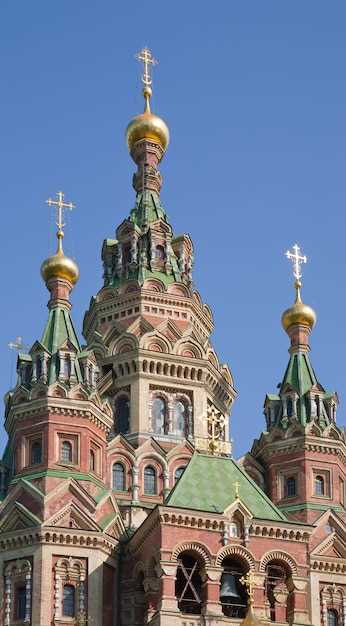 Moscow, The Golden Ring & St. Petersburg – A Comprehensive Russia Travel Guide">
Moscow, The Golden Ring & St. Petersburg – A Comprehensive Russia Travel Guide">

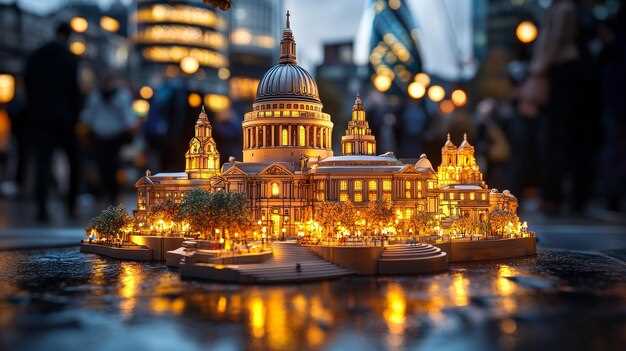
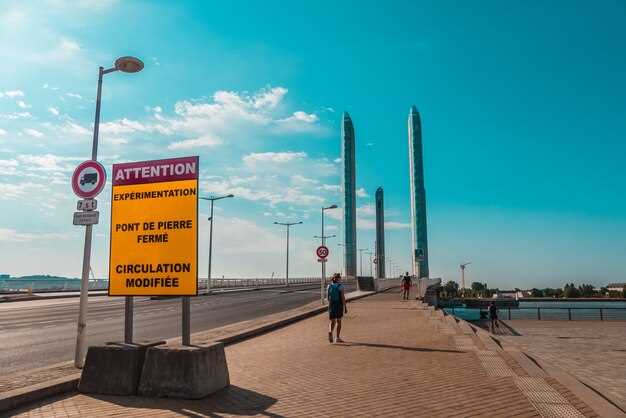 May Newsletter – How to Avoid the M-4 Highway from Moscow to Sochi">
May Newsletter – How to Avoid the M-4 Highway from Moscow to Sochi">
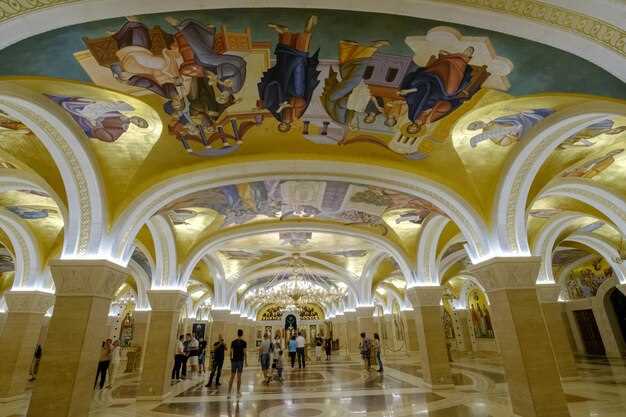 Winzavod Art Center Guide – Moscow Gallery Visit Tips">
Winzavod Art Center Guide – Moscow Gallery Visit Tips">
 Best Day Trips from Moscow – Exploring the Surrounding Region in 2025">
Best Day Trips from Moscow – Exploring the Surrounding Region in 2025">
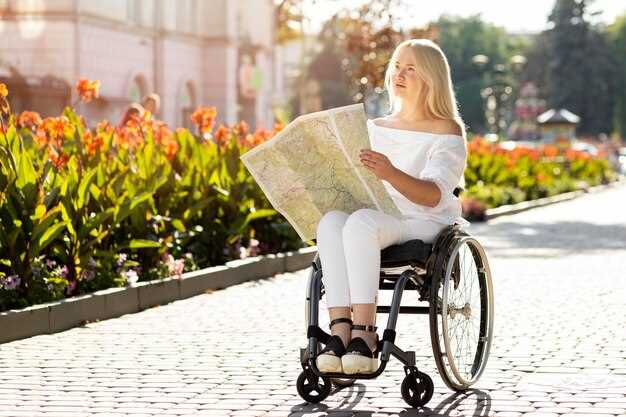 Top 13 Wheelchair-Accessible Things to Do in Moscow">
Top 13 Wheelchair-Accessible Things to Do in Moscow">
 Moscow Marathon 2025 – Dates, Route, Registration, and Practical Tips">
Moscow Marathon 2025 – Dates, Route, Registration, and Practical Tips">
 Zamoskvorechye District Guide – Explore Moscow’s Historic Waterfront Neighborhood">
Zamoskvorechye District Guide – Explore Moscow’s Historic Waterfront Neighborhood">
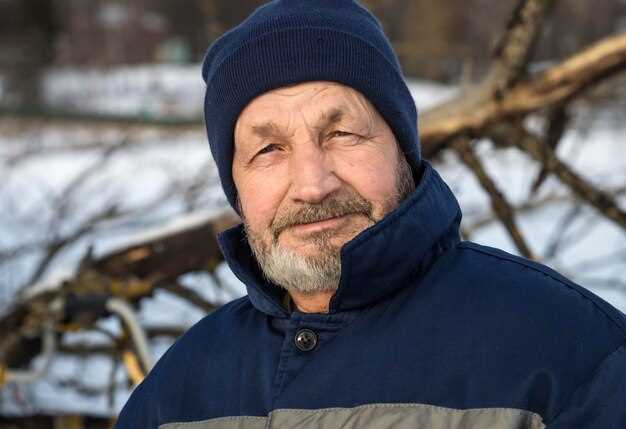 Russia’s Elderly Face Rough Living as State Aid Shrinks">
Russia’s Elderly Face Rough Living as State Aid Shrinks">
 Moscow Sheremetyevo Airport Bus – Routes, Timetables, and Fares">
Moscow Sheremetyevo Airport Bus – Routes, Timetables, and Fares">